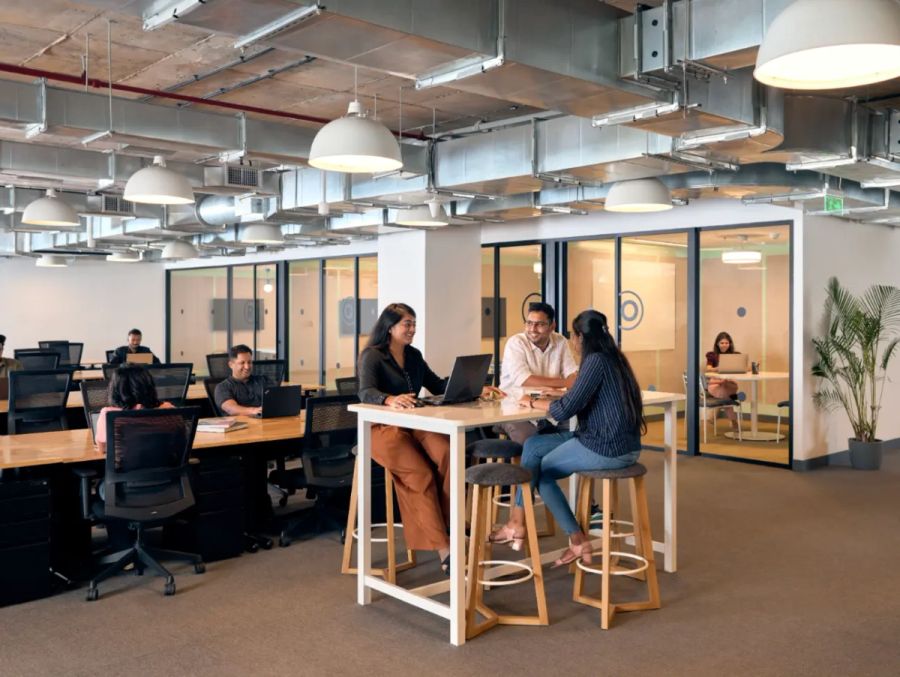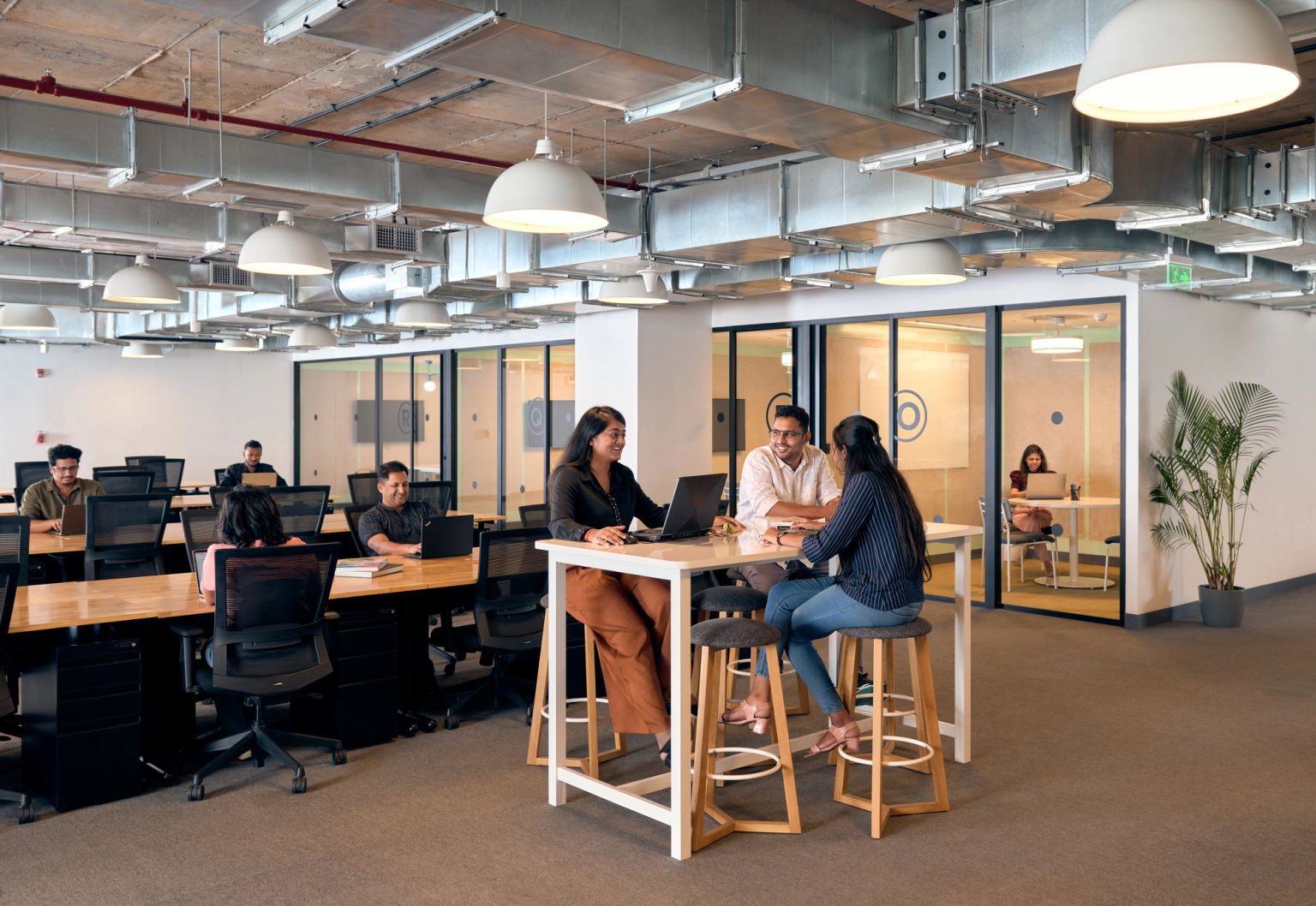CULTURE & COMMUNITY
Understanding the Hybrid Work Model

Learn about Hybrid Job Meaning and how the Model works. WeWork is a perfect solution for companies who have hybrid modes of working for cost efficiency. Contact Now!
In recent years, the world of corporate work has undergone a major transformation. Today, for most organisations, the traditional 9-to-5 office setup is no longer the norm. Many companies are now adopting a more flexible approach- the hybrid work model, reshaping how and where employees work.
In this article, we will learn the details of the hybrid work model, understand the hybrid job meaning, types of hybrid work models, examples, benefits and challenges of this model, and the factors that are driving its rise.
What is the hybrid work model?
The hybrid work model, or the hybrid mode of working, combines remote work and in-office work. In this model, employees are allowed to split their time between working remotely from work or Flexible Working spaces and working from the company’s office. This gives them the flexibility to take advantage of the benefits of remote work along with the benefits of in-person collaboration in office.
Types of hybrid work models
Hybrid work models can vary significantly depending on the organisation's structure, industry, and specific needs. Some common types include:
1. Flexible hybrid work model
In this type of hybrid work model, individuals can choose their location to work and their working schedule based on their preferences. While this flexibility can be beneficial for employees, it can be a logistical disaster for an organisation if they do not have close coordination and transparency between different team’s work schedules.

2. Scheduled hybrid model
Here, organisations fix the days when employees are allowed to work remotely or from the office. For example, the company may schedule certain teams to go to the office on Mondays and Tuesdays, and others on Wednesdays and Thursdays.

Hybrid work model examples
Many companies have started implementing the hybrid work model after understanding its potential to maximise productivity, employee satisfaction, and work-life balance. Here are some examples:
Apple:
In 2023, Apple made it compulsory for employees to work from their office thrice a week, with 1 month of ‘work from anywhere’ in a year.
- McCain Foods:
In the same year, global frozen foods giant McCain Foods adopted a hybrid work model where their employees were asked to work from the office for 12 days a month.
Factors for the rise of hybrid work
Various factors have contributed to the rise of the hybrid work model. Some of them are discussed below:
1. Developments in technology
Most organisations have adopted digital tools and project management platforms, making it easier to work remotely without compromising on results.
2. Changing preferences
Today, most employees prioritise flexibility in their jobs. This has led to more organisations to change their policies and adapt the hybrid office model to attract more talent.
3. Pandemic and the global lockdown
The COVID-19 pandemic and the lockdown brought in the shift towards remote work. This helped organisations realise the importance of workplace flexibility to maintain business growth.
Also Read: Maintaining employee experience in a hybrid model of work
Benefits of the hybrid work model
Benefits for employees
- The hybrid work model gives employees the flexibility to manage their work schedules as per their preferences, allowing them to maintain a good balance between professional and personal responsibilities.
- Since they do not need to travel to the office every day, employees spend less time commuting, which also helps in reducing stress.
- The hybrid work model also improves employees’ work-life balance as they have more time to spend with family and pursue other interests.
Benefits for employers
- Various studies show that remote working can enhance employee productivity.
- Moreover, with the hybrid work model, employers can save a huge amount due to reduced overhead expenses like utilities, maintenance, etc.
- By adopting the hybrid work model, employers can attract talent from different locations and offer them remote working options. This allows companies to access a wider talent pool.
Also Read: How Flexible Workspaces can meet the demands of today and tomorrow
Challenges of the hybrid work model
Now that we know the benefits of the hybrid work model, let us take a look at the challenges it presents:
Reduced communication and collaboration
It can be challenging to maintain effective communication and collaboration among in-office team members and remote workers in the absence of clear channels of communication and adequate technology infrastructure.
Reduced engagement
In the remote working setup, many individuals may feel disconnected or isolated from their team members. This may lead to lower employee engagement and reduced morale.
How Flexible Working spaces can support the hybrid work model
Flexible Working spaces offer various benefits that can complement the hybrid work model. Let’s understand these benefits in detail:
Flexible Working spaces like WeWork offer a professional working environment outside the traditional office setup. This can be beneficial, especially for those remote workers who may struggle with a loss of productivity at home due to multiple distractions. At our Flexible Working spaces, such remote workers can access a private office equipped with all the necessary tools to enhance focus and productivity.
Moreover, Flexible Working spaces provide a sense of community among its members. At Flexible Working spaces, remote workers get opportunities to network and collaborate with like-minded professionals from diverse industries.
Flexible Working spaces also promote work-life balance and overall well-being by giving remote workers access to various amenities. These may include wellness programs, relaxation areas, etc. These amenities can help reduce burnout.
Also Read: Know all about the benefits of Flexible Working space
In conclusion
With the onset of the hybrid work model, we have seen a shift in how we approach work. This model offers the flexibility required to thrive in today’s dynamic world. By combining the best of both worlds- remote work and in-office collaboration, companies can build a more inclusive and productive workforce.
However, it must be noted that implementing the hybrid work model requires careful planning and open communications to avoid the challenges presented by this working structure.
Related Blogs:

CULTURE & COMMUNITY
Many professionals now deal with stress regularly, with tight deadlines and long work hours in a stressful workplace. In such a demanding and fast-paced work culture, mindfulness can be an effective strategy.

CULTURE & COMMUNITY
A buddy system involves assigning a new employee a coworker buddy. The buddy, who is an experienced worker, guides the new employee for the first weeks or months of work.

